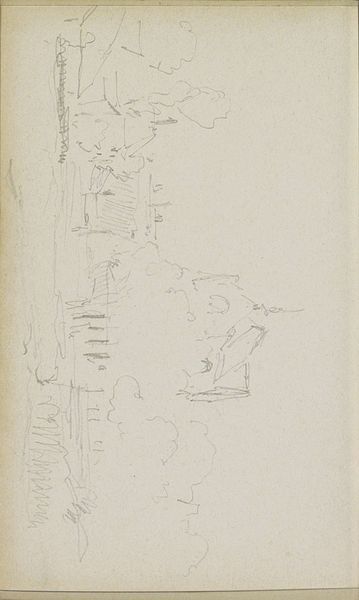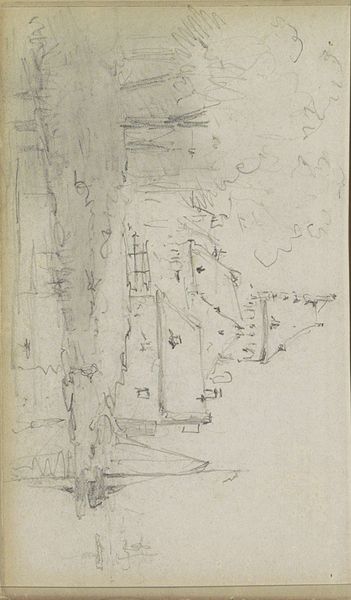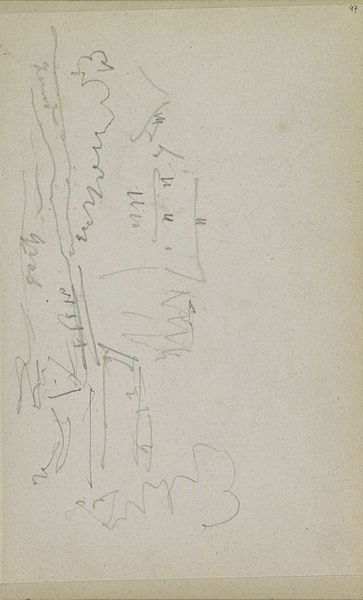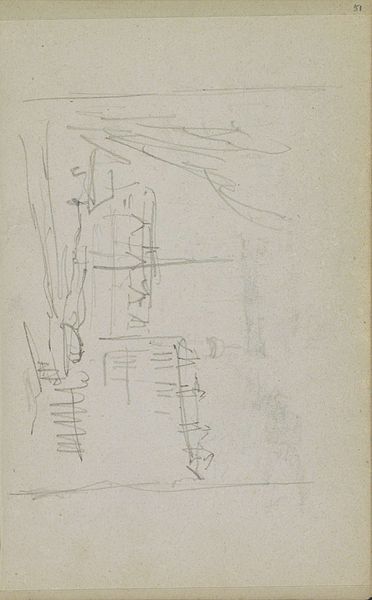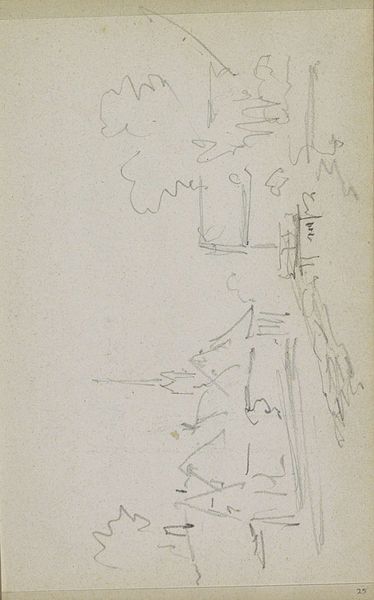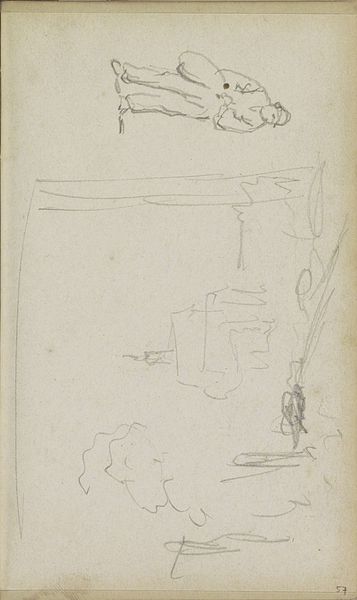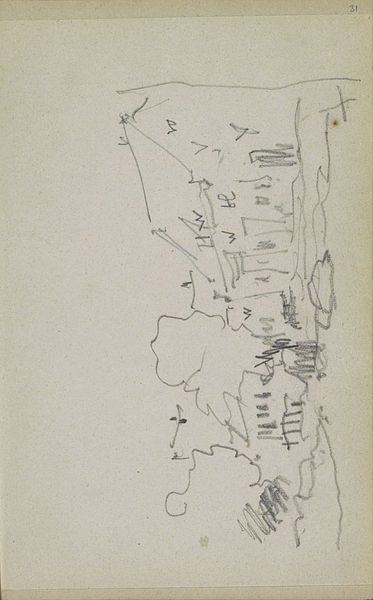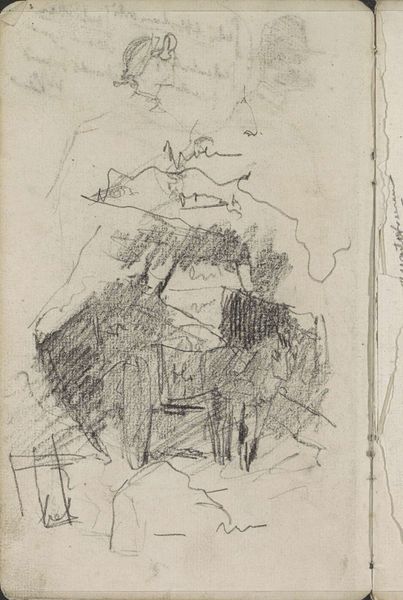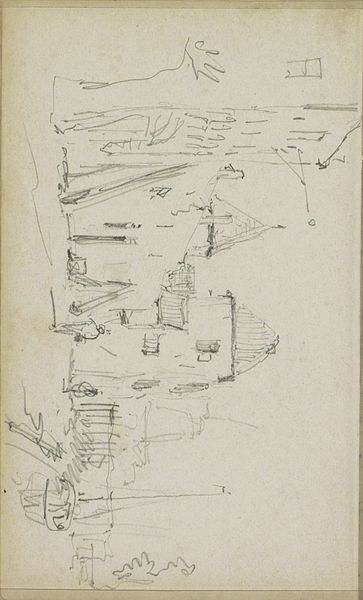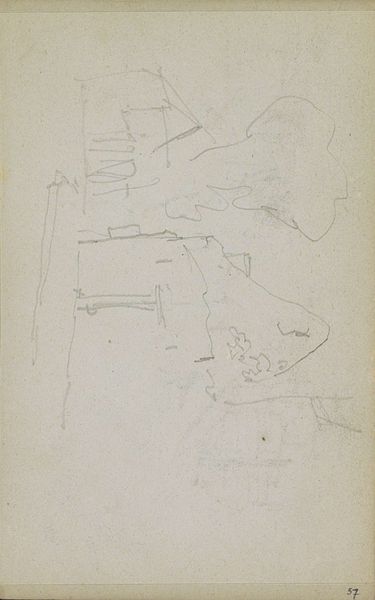
drawing, pencil
#
drawing
#
amateur sketch
#
toned paper
#
light pencil work
#
impressionism
#
pencil sketch
#
incomplete sketchy
#
landscape
#
personal sketchbook
#
idea generation sketch
#
ink drawing experimentation
#
pencil
#
sketchbook drawing
#
sketchbook art
Copyright: Rijks Museum: Open Domain
Curator: Well, this is interesting. My first thought is...fragmentary. It’s like a half-remembered dream sketched onto paper. Editor: Indeed. What we're looking at here is a pencil drawing titled "Vervallen muur," which translates to "Dilapidated Wall," created by Adrianus Eversen sometime between 1828 and 1897. It has the quality of something you'd find tucked away in an artist's personal sketchbook. Curator: It certainly has that feel – very intimate and almost voyeuristic, like stumbling upon a private moment of observation. It’s sketchy, the lines are faint, and the scene is… well, dilapidated! I find beauty in the brokenness; there's something compelling about the imperfection. Editor: Agreed. I see it as more than just a wall; it's a symbol of decline, perhaps even societal decay. Eversen was working in a period of significant social upheaval in the Netherlands. Urbanization and industrialization were rapidly changing the landscape and the ways people lived. This drawing speaks to that, a quiet commentary on the fading past. Curator: Ooh, I love that interpretation! For me, it's less about broad social commentary and more about the transient nature of things. Like, everything eventually crumbles, whether it’s a literal wall or an idea. The beauty, though, lies in the weathering, in the marks left behind. Editor: Precisely. And who decides what constitutes “beauty,” anyway? Perhaps Eversen is subtly challenging the conventional notions of beauty in art by finding it in this neglected corner, a fragment of a forgotten structure. The drawing reminds me of the architectural drawings Piranesi created in Roman prisons; though obviously different in setting, I find them both charged with feelings of claustrophobia, loneliness, and unease. Curator: Yes! It's not the grand, imposing edifice of power, but the quiet dignity of something left behind. It invites contemplation, not admiration, almost as if Eversen himself is having second thoughts about what he's memorializing and whether any of it will stand the test of time. I find it fascinating. Editor: Absolutely. It encourages us to question not just the physical structures around us, but the social and historical forces that shape them. A seemingly simple drawing that sparks a multitude of thoughts!
Comments
No comments
Be the first to comment and join the conversation on the ultimate creative platform.
